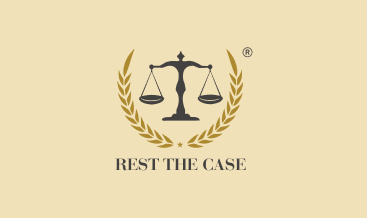Books
THE ACCIDENTAL PRIME MINISTER – THE MAKING AND UNMAKING OF MANMOHAN SINGH

By: Sanjaya Baru
It was in the year 2004 that Sanjaya Baru decided to leave his successful career as chief editor of the Financial Express to join Manmohan Singh as his media adviser. Being an admirer of the technocrat, Baru saw his new role as an opportunity to help a man he respected lead India down a new path. As Manmohan Singh’s self-appointed ‘conscience-keeper’, Baru pens down Singh’s transformation from technocrat to politician in his book, ‘The Accidental Prime Minister – the making and unmaking of Manmohan Singh’. He tells the story of what it was like to manage public opinion for the Prime Minister and how their relationship worked out while giving the readers a peek into the behind-the-scenes of the Indian political system. The book is one of the most important and intimate accounts of Singh as Prime Minister. It not only captures the early days of the UPA-1 Government but also mentions the historic step taken by the Prime Minister as part of the Indo-US nuclear deal, in great detail.
The book might be designed to salvage the reputation of India’s 13th Prime Minister but it also points out the discrepancies in the Indian political system. While Baru praises Singh for his efforts, he also shows him in a different light. From ending India’s nuclear apartheid to economic policymaking, Baru cannot find any faults in Singh and his way of administration. According to Baru, Singh’s first innings as Prime Minister i.e. from 2004 to 2009 was outstanding. However, things went downhill for the Prime Minister in his second round, beginning in 2009, by which time Baru had left the Prime Minister’s Office.
As the book progresses, the writer shows Singh in a different light and changes his perceived image of an apolitical and tactically naive leader who landed the Prime Minister’s job accidentally to an ingenious and sharp political leader. Although Baru does not say so directly, he throws several hints to prove his point. To prove his point, the writer has mentioned two significant incidents that lead him to believe so. Firstly, Baru talks about Singh’s attitude and response to corruption. According to him, Manmohan Singh’s silence on the issue of tackling his colleagues and their corrupt nature is not a product of his political weaknesses but a personal choice. On-Page 84 of the book, Baru writes, “Dr. Singh’s general attitude towards corruption in public life, which adopted through his career in government, seemed to me to be that he would himself maintain the highest standards of probity in public life, but would not impose this on others,". This explains the nature of corruption that went on under Singh’s government. Baru’s description of Singh could be acceptable and suited for a civil servant, detached and aloof, however, as Head of Government, one expects a more disciplined and strict response. Singh’s passive response towards his corrupt colleagues hit the United Progressive Alliance’s (UPA) fortunes the most. In simple words, the Prime Minister's response or lack of it was one of the main reasons why the problem went on to become a threat to the ruling party at the time. Secondly, the writer points out Singh’s unwillingness or rather his inability to quit as Prime Minister at the right time. After running into rough political weather, Singh’s inability to quit as Prime Minister was equally complex. It is worth mentioning that during UPA-1, Singh successfully used the threat of resignation to get the Indo-US civil nuclear deal cleared past a sceptical Congress leadership. However, that threat worked because no leader could take over if Singh quit. But, by UPA-2, that problem had been solved by Rahul Gandhi’s official christening into politics. Hence, after the nuclear deal, Singh never threatened to resign but in fact, withdrew his hand altogether in the time of crisis. Baru highlights the fact that Singh used the threat to resign as a strategic device, but, having used it once, he knew it would not work again.
The writer goes on to question and defend Singh at the same time by writing on page 281 of the book, “Should he have resigned at the first whiff of scandal, owning moral responsibility for the corruption of others, instead of defending the government? Perhaps. Could he have resigned? Maybe not. The party would have hounded him for ‘letting it down’. It would have then accused him of trying to occupy the high moral ground and quitting in principle to avoid being sacked for not ‘delivering the goods’. When the horse you are riding becomes a tiger it is difficult to dismount," This is nothing but an attempt at a skilful defence that the writer has made in a very subtle manner.
Baru ends by showing how Singh willingly chose a different path when everyone around him wanted him to select the other. If he had quit when things started getting ugly, his party and the party’s leadership would have been in trouble and not Singh. However, Singh chose to stay on until his party thought of him as a liability. The writer of The Accidental Prime Minister, Sanjaya Baru, highlights many such points when Prime Minister Manmohan Singh could have taken the decision to go but did not.




